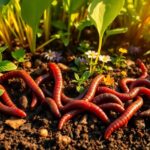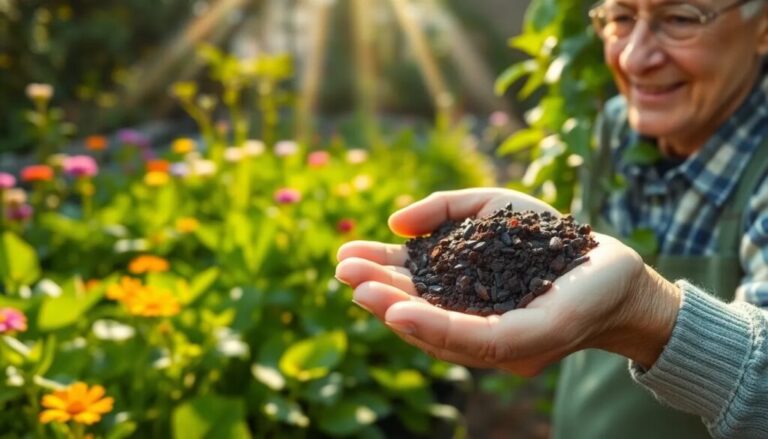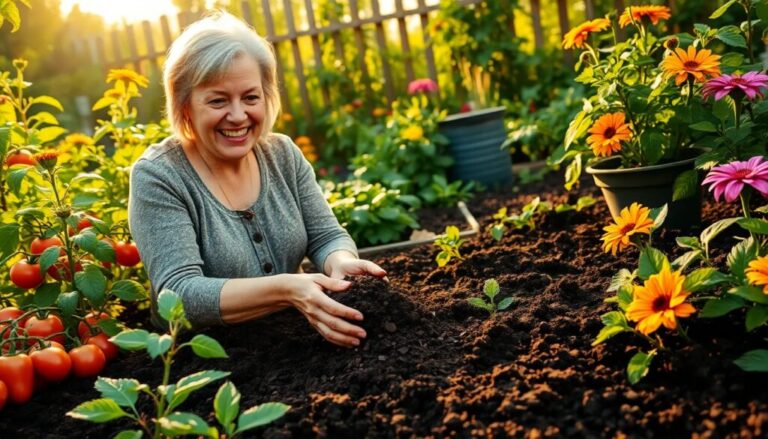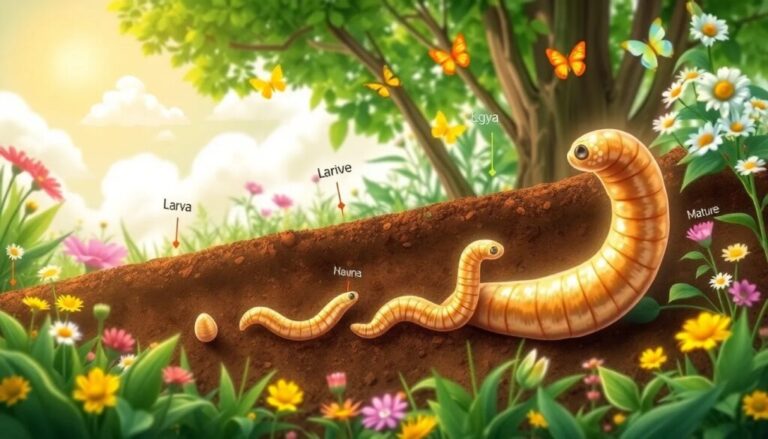Red wiggler eggs: all you need to know
Red wiggler eggs are an essential part of the life cycle of red wiggler worms, scientifically known as Eisenia Foetida. These small worms play a crucial role in composting, helping to break down organic waste. In this article, we will explore everything you need to know about red wiggler eggs and their life cycle.
How do red wiggler eggs look?
Red wiggler eggs have unique characteristics that make them easily identifiable. Generally, red wiggler eggs are oval in shape and vary in color from yellow to light brown.
- They are approximately 1 to 2 mm in diameter.
- Normally, each cocoon contains between 4 and 6 embryos.
- They have a gelatinous texture, which helps them maintain the moisture necessary for development.
These eggs are laid in a cocoon, a capsule that protects the embryos during their development. The gelatinous appearance of the eggs helps maintain an optimal environment for their growth.
What is the life cycle of red wiggler worms?
The life cycle of red wigglers consists of four main stages: egg, juvenile, adult, and mating. Each stage has its own set of characteristics and development time.
- Egg: Eggs are laid in cocoons and require an adequate incubation period.
- Juvenile: After approximately 23 days, the embryos develop into young worms that begin to feed on organic matter.
- Adult: Within 40 to 60 days, the young worms mature and develop reproductive organs.
- Mating: Adults mate, resulting in new cocoons and the continuation of the cycle.
Sexual maturity occurs around 10 weeks of age, at which point red wigglers are capable of reproduction. This highlights the importance of these worms in the composting process and the health of the ecosystem.
How long does it take for red wiggler eggs to hatch?
The incubation of red wiggler eggs is a delicate process. Generally, the eggs take approximately 23 days to hatch, depending on environmental conditions. Factors such as temperature and humidity are crucial to this process.
The ideal temperature range for incubation is between 70°F and 80°F (21°C and 27°C). Maintaining a dark environment is also essential, as the eggs require privacy to develop properly.
If conditions are optimal, the hatching rate can be quite high, resulting in a healthy population of young worms.
What are the best conditions for hatching red wiggler cocoons?
To maximize success in incubating red wiggler cocoons, certain environmental conditions must be maintained. Here are some essential tips:
- Keep humidity between 85% and 90%.
- Avoid standing water that could damage the eggs.
- Provide a dark, quiet environment.
In addition, using materials such as a polystyrene cooler with moist substrate can help maintain a constant temperature. Using thermal blankets may be a good idea if temperatures drop too low.
How do red wiggler worms reproduce?
Red wigglers are hermaphrodites, which means they have both male and female reproductive organs. This allows them to mate with other worms and produce a considerable number of eggs.
During mating, two worms exchange sperm, resulting in the formation of multiple cocoons. Each cocoon can contain up to 10 fertilized eggs, which significantly increases the reproduction rate.
Once fertilized, the eggs develop inside the protective capsule, where the embryos have a safe environment to grow. This efficient reproduction system is crucial for maintaining the red wiggler population and its role in composting.
Why are red wigglers important for composting?
Red wiggler worms are essential to the composting process for several reasons:
- They break down organic matter, turning it into nutrient-rich humus.
- They improve soil structure, which benefits plant growth.
- They help reduce the amount of waste that ends up in landfills.
By feeding red wigglers food scraps and other organic materials, you can create an efficient recycling cycle that benefits both the environment and your gardens and crops.
What should you feed baby red wigglers after hatching?
After baby red wigglers have hatched, it is crucial to provide them with an appropriate diet to ensure their growth and development. Here are some recommended options:
- Aged manure: Aged manure is an excellent source of nutrients.
- Apple slices: Apple slices offer a good balance of sugars and moisture.
- Vegetable peels: Vegetable peels are a nutritious and tasty option.
It is vital not to overfeed young worms. Offering small amounts of food and monitoring their consumption can help maintain a healthy environment for growth.
Red wigglers are true heroes of composting, helping to recycle organic waste and create healthier soil. By learning about red wiggler eggs and their life cycle, you can contribute to a more sustainable planet.










